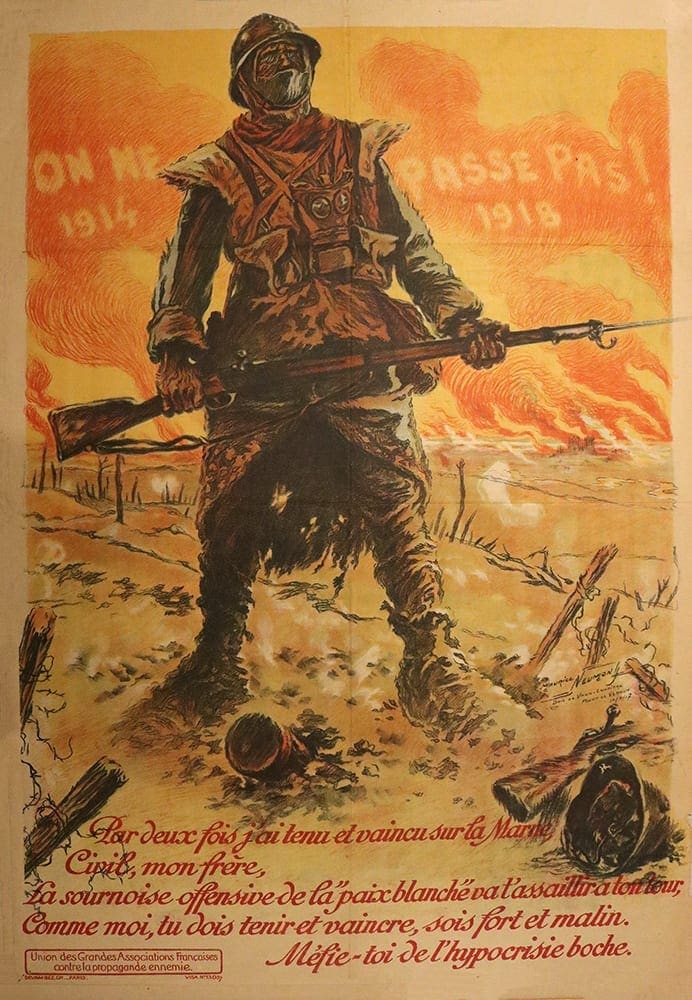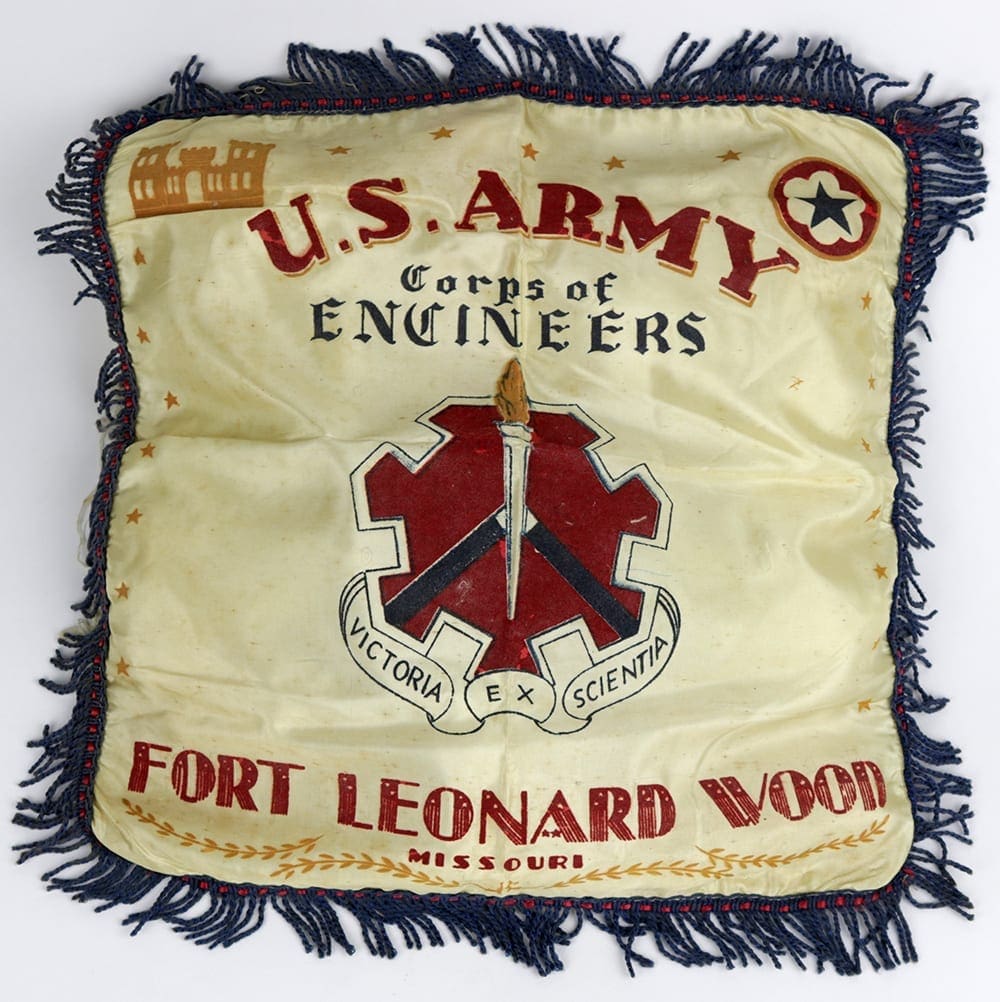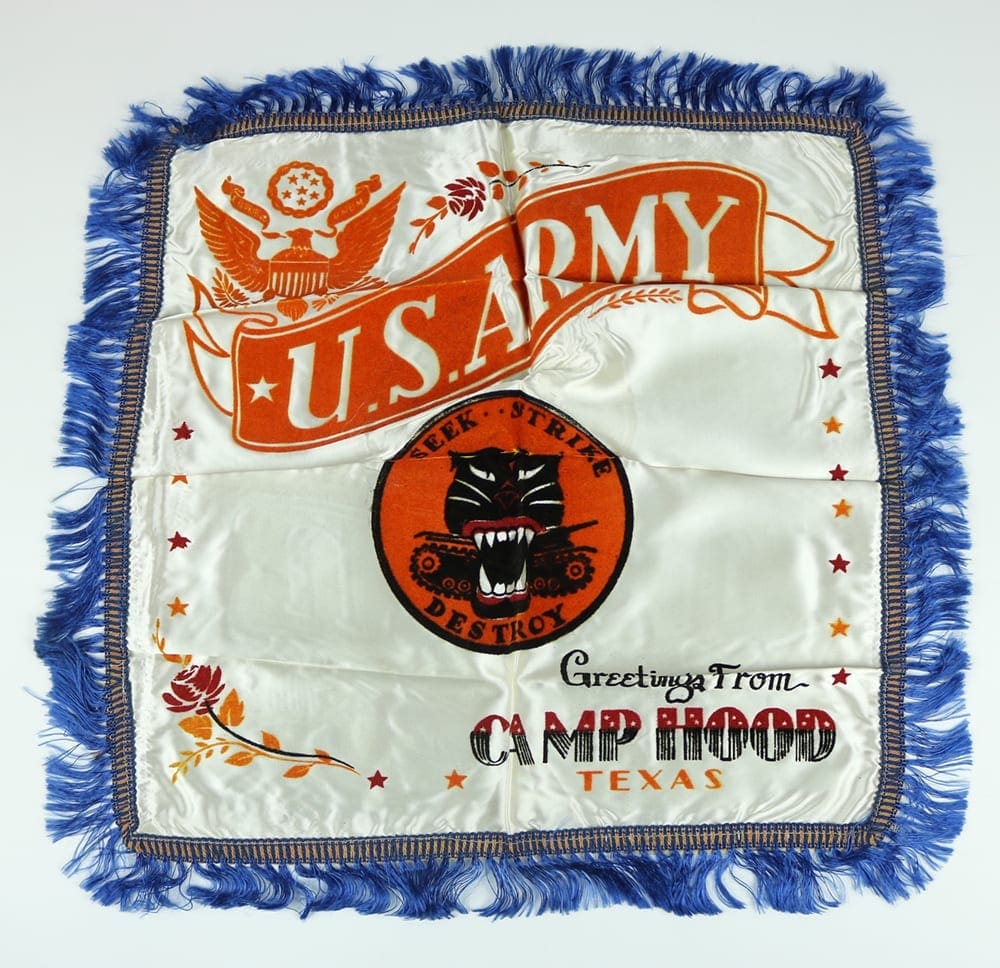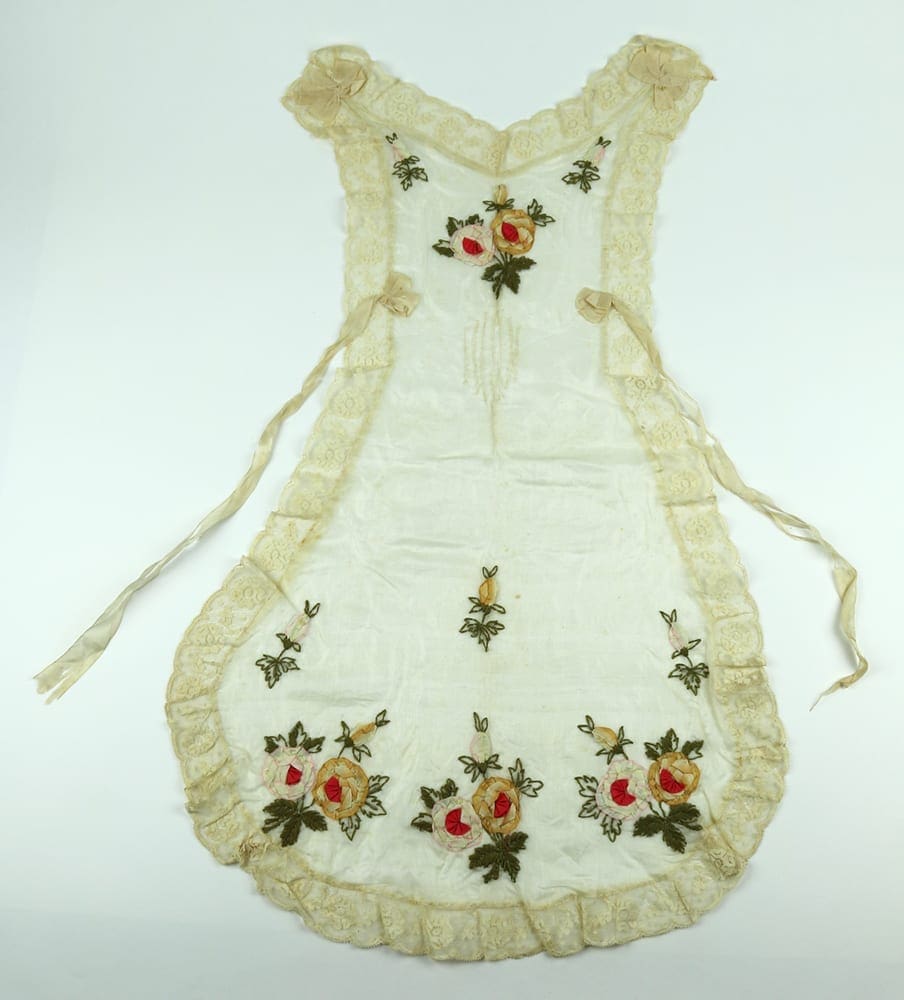World War I Poster
The 1918 World War I poster from France was discovered in a trunk in an old hotel in Eureka Springs (Carroll County). The trunk, which contained posters, army manuals, maps, and letters, had belonged to 1st Lt. John Harold Lawson (1897-1966), who served with the Illinois 123rd Field Artillery 33rd Division during World War I. Following the war,Lawson returned to his hometown of Kewanee, Illinois, where he lived with his mother while attending college. From 1938 to 1960 he and his wife, Leora, lived in Topeka, Kansas, where he worked as an accountant for Kansas Power and Light Company. Both John and Leora Lawson are buried in the Eureka Springs Cemetery.
The “Union of French Associations Against Enemy Propaganda” commissioned French artist Maurice Neumont to create the artwork. Neumont depicts a soldier wearing a gas mask standing on a war-torn field. Behind him in a cloud of smoke is the phrase, “They Shall Not Pass! 1914–1918.” At the bottom of the poster is a message from the soldier, who is speaking to French civilians. It reads,
Twice I have held and won on the Marne,
Civilian, my brother,
The underhanded offensive of the “white peace” will assault you in your turn,
Like me, you must hold and win, be strong and shrewd,
Beware of German hypocrisy.
The soldier refers to two battles that were waged along the Marne River in France; both were Allied victories over the German armies. “White Peace” is a term used to describe a settlement where nations agree to cease fighting, with no annexations or reparations exchanged. The implyed message of the poster is that, for France, true peace can only come with victory.
Donated by Lonnie Walker
The 1918 World War I poster from France was discovered in a trunk in an old hotel in Eureka Springs (Carroll County). The trunk, which contained posters, army manuals, maps, and letters, had belonged to 1st Lt. John Harold Lawson (1897-1966), who served with the Illinois 123rd Field Artillery 33rd Division during World War I. Following the war,Lawson returned to his hometown of Kewanee, Illinois, where he lived with his mother while attending college. From 1938 to 1960 he and his wife, Leora, lived in Topeka, Kansas, where he worked as an accountant for Kansas Power and Light Company. Both John and Leora Lawson are buried in the Eureka Springs Cemetery.
The “Union of French Associations Against Enemy Propaganda” commissioned French artist Maurice Neumont to create the artwork. Neumont depicts a soldier wearing a gas mask standing on a war-torn field. Behind him in a cloud of smoke is the phrase, “They Shall Not Pass! 1914–1918.” At the bottom of the poster is a message from the soldier, who is speaking to French civilians. It reads,
Twice I have held and won on the Marne,
Civilian, my brother,
The underhanded offensive of the “white peace” will assault you in your turn,
Like me, you must hold and win, be strong and shrewd,
Beware of German hypocrisy.
The soldier refers to two battles that were waged along the Marne River in France; both were Allied victories over the German armies. “White Peace” is a term used to describe a settlement where nations agree to cease fighting, with no annexations or reparations exchanged. The implyed message of the poster is that, for France, true peace can only come with victory.





